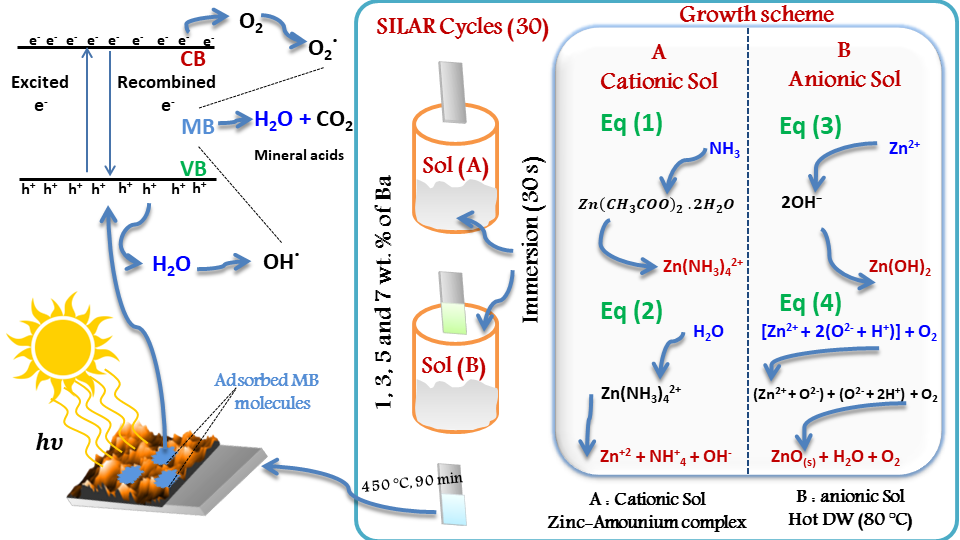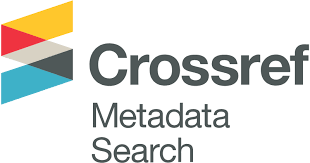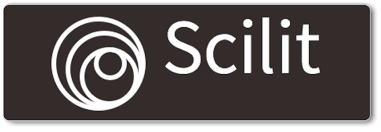Author Guidelines
- Submission Process
Please write your text in proper English with consistent usage (American or British). As part of the submission process, authors are required to ensure their submission has not been previously published, nor is it before another journal for consideration (or an explanation has been provided in Comments to the Editor). The text should be typed using Word (version 7 and onwards) including tables and captions.
For assistance with the online submission system, please contact the Editor-in-Chief, Elhachmi Guettaf Temam. E-mail: jaest@univ-biskra.dz
Registration and Login
First, authors need to register and log in to the submission system through the provided link: Paper Submission
Manuscript Upload
Submit your manuscript as a single Microsoft Word document. Ensure all parts of the manuscript, including figures, tables, and supplementary materials, are included.
Peer Review
Manuscripts will undergo a peer review process to assess their quality and relevance for the journal.
Revision
Based on the reviewers' feedback, authors may be required to make revisions to their manuscript.
Acceptance
Once your manuscript meets all requirements and is approved by the peer reviewers, it will be accepted for publication.
Proofs
Proofs will be sent to the corresponding author and should be returned within 3 days of receipt. Corrections should be restricted to typesetting errors and minor changes.
Online publication
Once the author's proof has been returned, the final PDF version of the article will be made and the article will be assigned to the current Issue ‘In Progress’. This will make the article available online, publically accessible, searchable and fully citable.
Copyright Transfer Statement
Upon the manuscript's acceptance, the author(s) shall be required to transfer the copyright of the article to the journal's publisher, representing all co-authors. The authors must confirm their awareness and consent to the article's content, including the listing of their names. This copyright transfer document serves as the final step in validating the paper submission.
Types of Paper
The JAEST journal publishes full-length research papers, short communication articles and review papers.
Full-length research papers
Full-length research papers are comprehensive studies that report original research. They should provide detailed information about new experimental methods, data, and findings, as well as their implications. The manuscript must consist of an abstract, introduction, materials and methods, results, discussion, conclusion, and references.
Short communication
Short communications are a great way to quickly report on new findings or techniques concisely. They should be significant and novel, and provide enough information to clearly understand the research. Short communications also include an abstract, introduction, materials and methods, results, discussion, and references, but are typically shorter in length compared to full-length research papers.
Review papers
Review papers are an essential part of research literature. They provide a comprehensive analysis of recent advances in a specific area, summarizing existing knowledge, identifying gaps, and suggesting future directions for research. A review paper typically includes an abstract, introduction, body of the text (with headings and subheadings), conclusion, and references. It is a critical evaluation of the literature that can help researchers and practitioners stay up-to-date with the latest developments in their field.
-
Manuscript Preparation
Formatting
Your manuscript should be typed in a clear, legible font (e.g., Times New Roman) with a font size of 12 pt. Use double-spacing and align text to the left. Ensure your document has continuous line numbering and sufficient margins on all sides.
Title Page
The title page should subsequently include the following elements: (1): the title of the paper (2): the authors' names and affiliations (3): the corresponding author with email address (4): highlights (5): a graphical abstract (6): a brief, informative abstract of 150 to 250 words.
Figures and Tables
Ensure that figures and tables are embedded in the text at the appropriate points, not at the end. They should be of high quality and legible.
References
Follow the journal's specific reference style, ensuring all references are complete and accurate. Please, to cite references in your text, please use the JAEST journal style. This will ensure that your citations follow the proper format and are consistent throughout your work.
-
Article Structure
Title Page
Title: Concise and informative, reflecting the study's content.
Authors: Full names and affiliations of all authors, including the department, university or organization, city, and country.
Corresponding Author: Indicate who will handle correspondence at all stages of reviewing, publication, and post-publication. Provide email address.
Abstract
A concise summary of the manuscript, typically 150-250 words, highlighting the main findings and conclusions. It should be standalone, without abbreviations, footnotes, or references.
Keywords
3 to 7 keywords or phrases, helping researchers find your paper in databases.
Introduction
In the introduction of a study, it is crucial to cover two main points. Firstly, you need to clearly state the purpose or reason why the study was conducted. Secondly, you should collect all the important and relevant background information and present it in the introduction. This will give the readers a sufficient understanding of the research conducted.
Here are the elements that must be included in the introduction and need to be proven:
-
Background information on the topic.
-
Review of the relevant literature.
-
The objectives or hypotheses of the study.
Materials and Methods
A detailed description of the study design, setting, participants, materials, procedures, data collection, and analysis to allow for replication.
Results
When presenting the findings of the study, it is recommended to follow the same order as the methods and use visual aids such as tables, figures, and graphs to clarify the data without interpreting it.
Discussion
Explain the significance of the results and their relation to the hypothesis, discuss future research and practical implications, and acknowledge the study's limitations.
Conclusion
It is important to avoid repeating information from the abstract or introduction when summarizing the main findings.
Acknowledgements
Please indicate if there has been any financial support or contributions from individuals not listed as authors of the work.
Units
Follow internationally accepted rules and conventions: use the international system of units (SI). If other units are mentioned, please give their equivalent in SI.
Math formulae
Please avoid submitting math equations as images, instead, insert them as editable text. For simple formulae, try to present them in line with the normal text and use the solidus (/) instead of a horizontal line to represent small fractional terms (e.g., X/Y). Whenever possible, variables should be presented in italics. Powers of e are often denoted by exp for convenience. If any equations need to be displayed separately from the text and are referred to explicitly in the text, please number them consecutively.
Figures and Tables
Include within the text at the appropriate points. Each should have a caption explaining the content. Ensure high quality for clarity and readability.
Tables
Tables should be formatted with double spacing on individual sheets, and sequentially numbered using Arabic numerals, positioned in the main text. Ensure each table is referenced within the text. Provide a concise descriptive title above each table. Please submit tables as editable text and not as images.
Figures
Figures must be sequentially numbered and integrated into the text. Illustrations, including photographs, diagrams, and schematics, should be embedded in the text with an appropriate resolution (≥ 300 dpi). Avoid using dark colours on dark backgrounds, as they do not reproduce effectively.
References
Please make a list of all the sources that were referenced in the manuscript. When citing sources in the text, ensure that each reference is assigned a corresponding number enclosed in a square bracket: [1]; [1,2]; [1-3]. If a reference has more than one author, use the abbreviation et al. after the first author's name in the text. However, in the reference section, include the names of all authors. Arrange the list of references in numerical order for clarity. Please ensure that there are no spelling, grammar or punctuation errors in the list.
References style
Reference to a journal publication:
[1] M.H. Fernandes, B. Ramos, A.L. da Silva, D. Gouvêa, Chloride-doped ZnO thin films prepared by spray pyrolysis: Effects on microstructural, optical, and photocatalytic properties, Micro Nanostructures 177 (2023) 207550. https://doi.org/10.1016/j.micrna.2023.207550.
Reference to a journal publication with an article number:
[2] A. Jerrentrup, T. Mueller, U. Glowalla, M. Herder, N. Henrichs, A. Neubauer, J. R. Schaefer, 2018. Teaching medicine with the help of “Dr. House.”. PLoS ONE. 13, e0193972. https://doi.org/10.1371/journal.pone.0193972
Reference to a book:
[3] R.C. Weast, CRC Handbook of Chemistry and Physics: A Ready-reference Book of Chemical and Physical Data, CRC Press, 1975.
Reference to a website:
[5] Climate change knowledge portal, Climatology for Algeria. https://climateknowledgeportal.worldbank.org/country/algeria/climate-data-historical, 1991-2020, (accessed 06 March 2024).
Graphical Abstract
A graphical abstract is a visual summary of the main findings of your research. It should capture the essence of your study and draw readers to the full text. Graphical abstracts should be submitted as a part of the title page during the online submission system. It will be listed online in search results, the content list, and the article, but not yet in PDF or print. Include key findings, methods, or any novel aspect of your research. Graphs, flowcharts, and diagrams are effective. Please minimize text and use labels or short captions to enhance understanding. A key figure from the original paper, summarizing the content can also be submitted as a graphical abstract.
Example
This graphical abstract illustrates a process for the photocatalytic degradation of methylene blue (MB) using ZnO thin films. It is split into two main sections:
-
Growth Scheme of the ZnO thin films (Right Side).
-
Photocatalytic Process (Left Side).

Highlights
Highlights are short, bullet-pointed statements that summarize the core findings or contributions of the author’s paper. Typically, 3 to 5 bullet points, each one a concise sentence long. Emphasize the novel aspects of your research and its implications. Cover the main results, methodology innovations, and potential impact on the field. Each highlight should not exceed 90 characters, including spaces.
Example
-
Increased film thickness enhances the degradation of Methylene Blue under sunlight.
-
ZnO films show band gap expansion from 3.15 eV to 3.31 eV with thickness growth.
-
SILAR technique yields ZnO nanorods with improved surface area.
-
Film resistivity rises with thickness, indicating tunable electrical properties.
-
Thicker ZnO films show increased (100) orientation.












